Hey there! Ever wonder what is polling rate and how to measure it how your mouse or keyboard magically knows where to move or what key you pressed? It’s all thanks to something called polling rate! Let’s break it down in super simple terms. If you want to test Polling rate you click on polling rate to check it
Table of Contents
What is Polling Rate?
Imagine your mouse or keyboard is like a chatty friend. Polling rate is how often it “talks” to your computer every second.
- Example: If your mouse has a 500Hz polling rate, it’s like saying, “Hey computer, where am I now?” 500 times every second!
- Higher Polling Rate = Faster Updates: A 1000Hz mouse checks in 1,000 times a second—super quick for gamers or fast typists!
- In case if your mouse is not working then you have to check this Article

How to Measure Polling Rate?
Want to check your device’s polling rate? Easy!
- Use a Free Tool: Visit clickhz.com Polling Rate Tester.
- Plug In Your Device: Connect your mouse or keyboard.
- Click & See: Move your mouse or press keys. The tool will show your polling rate in real-time!
Pro Tip: Higher numbers (like 1000Hz) mean smoother movements, but they can drain battery life faster on wireless devices.
What is Polling rate – Video tutorial
Fun Example Gaming vs Polling Rate
Imagine you’re playing a fast-paced game (like Fortnite or Valorant):
- Low Polling Rate (125Hz): Your mouse updates every 8 milliseconds. It’s like blinking slowly—you might miss quick enemy moves!
- High Polling Rate (1000Hz): Your mouse updates every 1 millisecond. It’s like having superhero reflexes—you react INSTANTLY!
Fun Fact: Pro gamers use high polling rates to stay sharp. But for casual browsing? Even 250Hz works just fine!

Why Should You Care?
- Gamers: Higher polling rate = smoother aiming.
- Designers/Artists: Precision matters for drawing or editing.
- Everyone Else: No need to sweat it—most devices work great as-is!
Polling Rate vs. Related Metrics: A Human-Friendly Breakdown
Let’s cut through the tech jargon. Think of your mouse like a nervous chef—how often it “checks in” with your computer (polling rate), how “zoomed in” it is (DPI), and whether it “changes speed” mid-move (acceleration). Here’s how they all play together:

DPI: The Microscope
- What it does: Controls how far your cursor moves when you nudge the mouse.
- Low DPI (400): Great for snipers—small moves, big screen jumps.
- High DPI (1600+): Perfect for designers—tiny, precise adjustments.
- Polling Rate vs. DPI:
- DPI = How much you move.
- Polling Rate = How often you report it.
Acceleration: The Speed Demon
- What it is: Mouse says, “You moved fast? Let me zoom!”
- Polling rate exposes acceleration quirks. At 1000Hz, speed changes feel jarring.
- Gamers: Turn acceleration OFF + high polling rate = predictable flicks.
- Scrollers: Acceleration ON + 250Hz = comfy for documents.
Latency: The Silent Saboteur
- What it is: Delay between moving your mouse and seeing it happen.
- Polling rate affects latency (1000Hz = 1ms delay vs. 125Hz = 8ms).
- But wireless mice add their own lag (Bluetooth = bad, 2.4GHz dongle = good).
Real-Life Scenarios
- Gaming: *500Hz polling + 800 DPI + no acceleration* = crispy headshots.
- Office Work: *250Hz + 1200 DPI + mild acceleration* = easy multi-monitor glides.
- Graphic Design: *1000Hz + 2000 DPI + no acceleration* = pixel-perfect curves.
Cheat Sheet: What Matters Most?
| User | Prioritize… | Why? |
|---|---|---|
| Competitive Gamer | Polling Rate > DPI | Minimize input lag |
| Digital Artist | DPI > Polling Rate | Precision over speed |
| Casual User | Neither (just disable acceleration) | Prevents cursor surprises |
Myth Busters
- ❌ “Higher polling rate ALWAYS better!” → Nope. It can drain batteries (wireless mice) or tax old PCs.
- ❌ “Polling rate & DPI are the same!” → DPI is your “zoom level,” polling rate is your “update speed.”
- ❌ “Wireless mice can’t handle high polling!” → Modern ones (like Logitech Lightspeed) do 1000Hz just fine.
TL;DR:
Polling rate = How chatty your mouse is.
DPI = How dramatic its movements are.
Acceleration = Whether it’s a speed addict.
Your job: Find the combo that doesn’t annoy you!
Test, tweak, and remember: Even pros fiddle with settings. Your perfect setup’s out there.
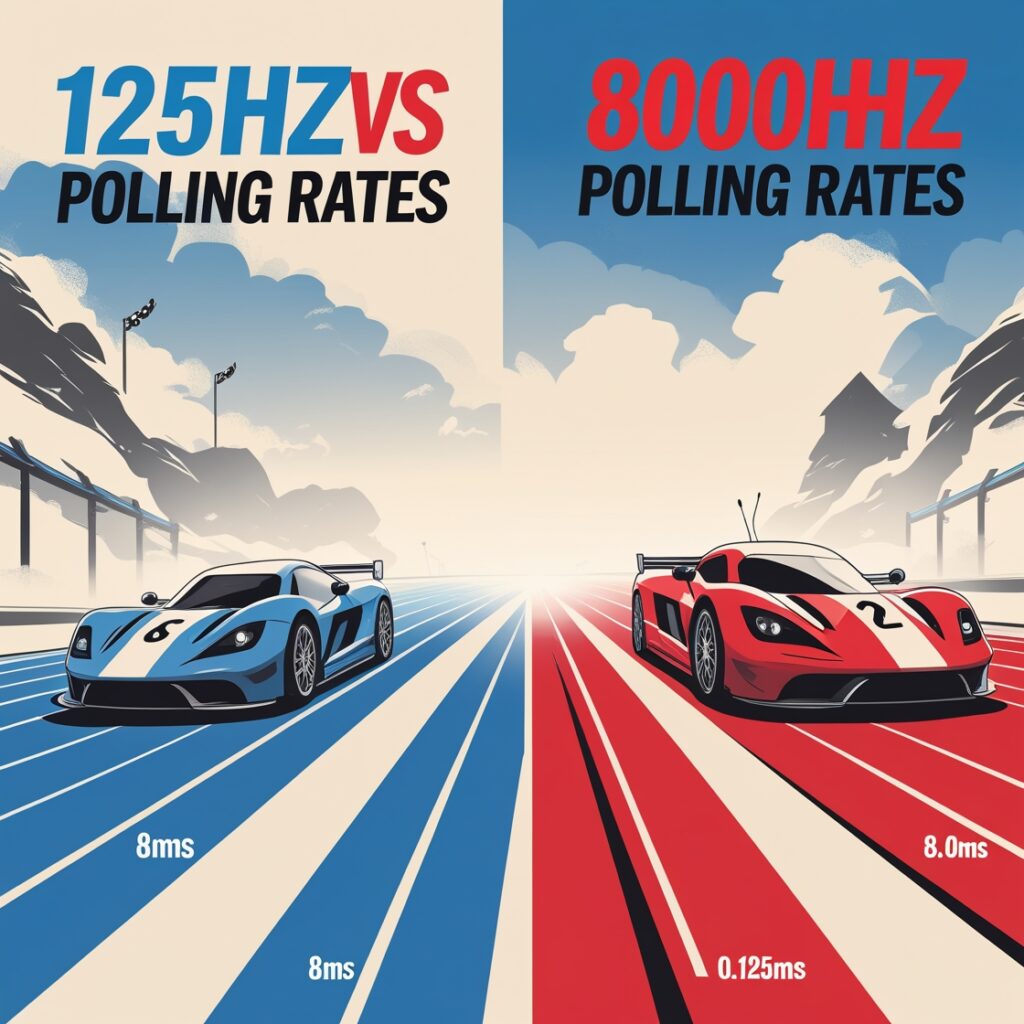
Master Your Mouse Settings: Polling Rate Insights and Precision Tools
Understanding your mouse’s polling rate—the frequency at which it reports its position to your PC—is critical for optimizing responsiveness in gaming or precision tasks.
Pair this knowledge with our specialized tools to fine-tune your setup: calculate sensitivity accuracy with the EDPI Calculator, validate your device’s true performance using the DPI Analyzer, and seamlessly adapt settings across devices with the Mouse Sensitivity Converter.
By combining insights about polling rate (measured in Hz) with these tools, you can ensure smoother tracking, reduced input lag, and a tailored experience for both competitive gaming and ergonomic workflows.
Why Does Polling Rate Matter?
Gamers, Listen Up!
If you play Fortnite, Valorant, or any fast game:
- High Polling Rate = Sharper Moves: Your mouse reacts instantly when you flick to shoot. No lag = more headshots!
- Low Polling Rate = Sluggish Feel: It’s like running in a dream where your legs won’t move fast enough.
Artists & Designers Need It Too!
Drawing or editing photos? A high polling rate helps:
- Draw Smooth Lines: Your cursor won’t “jump” while you sketch.
- Zoom & Edit Precisely: No delays when adjusting tiny details.
But Wait Battery Life Matters!
For wireless mice/keyboards:
- High Polling Rate: Drains battery faster (like leaving your phone screen on all day).
- Low Polling Rate: Saves battery (like using “battery saver” mode).
Tip: Switch to high polling rate only when gaming or designing!
Casual Users? Don’t Stress!
If you’re just browsing, watching Netflix, or typing:
125Hz–250Hz is totally fine. Your cat videos will still load perfectly.
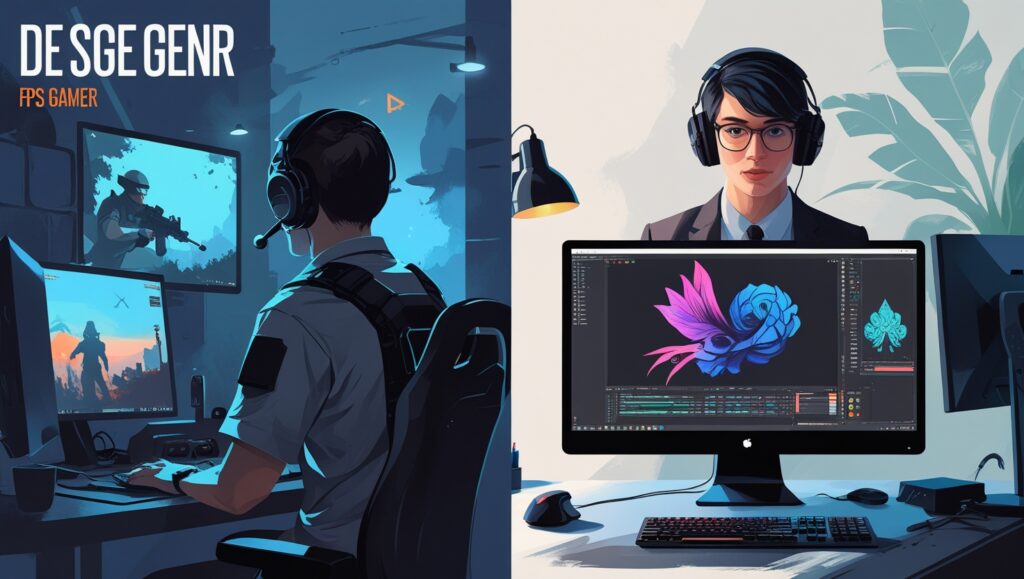
Wait, Can It Be Too High?
Yes! If your computer is old or slow, a super-high polling rate (like 8000Hz) might overwhelm it. It’s like asking your computer to solve 8000 math problems a second – it might start sweating! This can cause lag or lower FPS (frames per second) in games.
Want to know how fast your mouse is chatting? Here’s how to test it:
Method 1: Check the Box or Software
Look at the Mouse’s Box: Many gaming mice proudly say “1000Hz Polling Rate!” on the packaging.
Check the Mouse Software: Brands like Logitech, Razer, or Corsair let you see (and change) the polling rate in their apps.
Method 2: Use a Free Online Tool
If your mouse doesn’t say, try this:
Step 1: Go to a polling rate tester website like clickhz.com.
Step 2: Move your mouse quickly in circles or zig-zags for 10 seconds.
Step 3: The tool will show you a number like 500Hz or 1000Hz. That’s your polling rate!
Pro Tip: Test it a few times to get an average. Sometimes Wi-Fi or background apps can mess with the result!
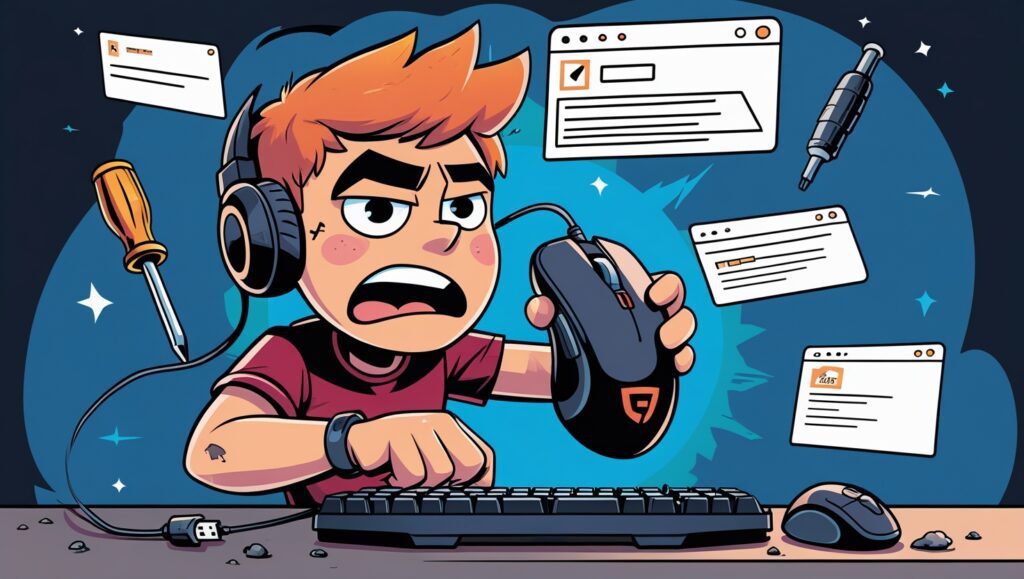
Should You Always Use the Highest Polling Rate?
Nope! Here’s a quick guide:
Gaming/Art: Use 500Hz–1000Hz for fast reactions.
School/Office Work: 125Hz–250Hz is totally fine (and saves battery for wireless mice!).
Super High Rates (2000Hz+) are only for powerful PCs and pro gamers.
Let’s Test It Together! (A Mini Activity)
Grab your mouse and go to clickhz.com.
Move your mouse slowly. Notice the numbers?
Now move it super fast like you’re dodging bullets in a game!
See how the polling rate changes? Faster movement = more updates!
Cool Facts for Gamers!
Gaming Mice often let you switch polling rates. Try 500Hz for racing games and 1000Hz for shooting games!
Wireless Mice: A higher polling rate can drain the battery faster. Charge it often!
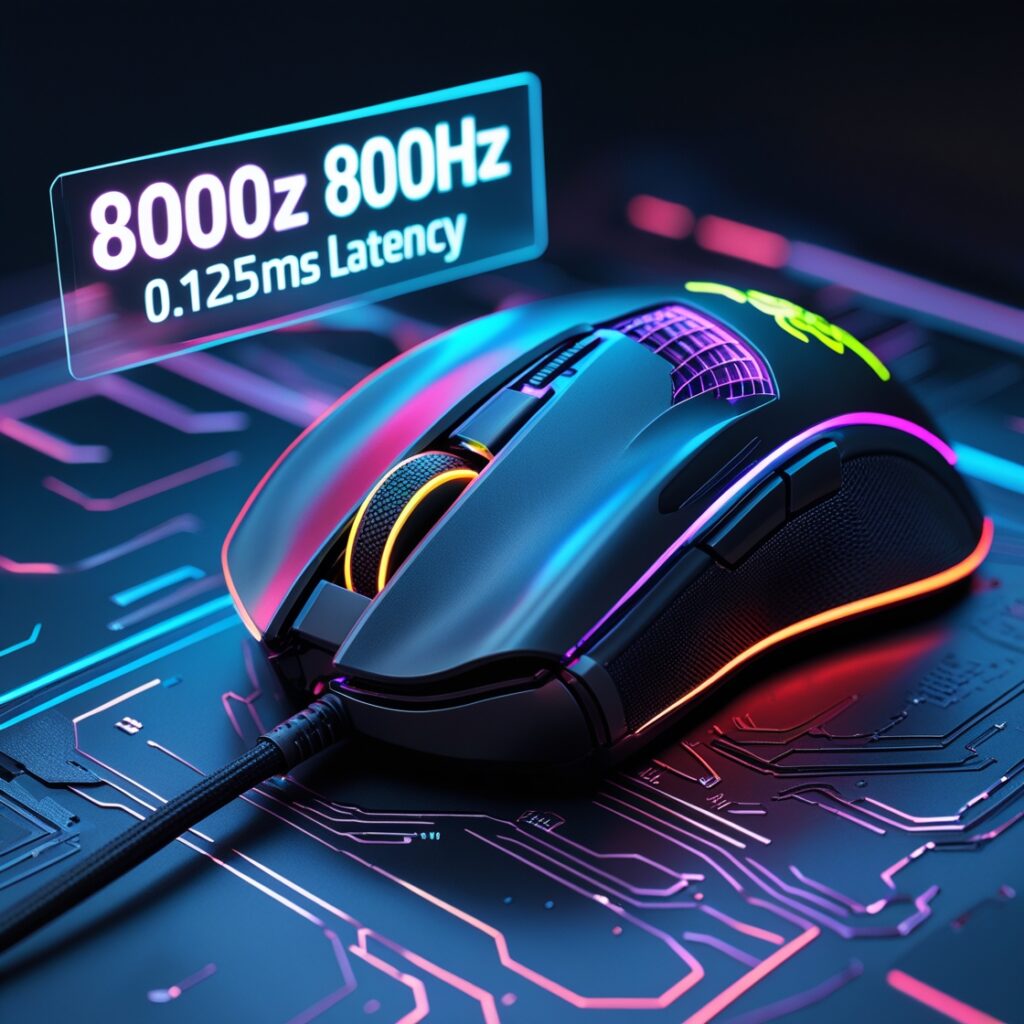
FAQs: Polling Rate Demystified
Q: What’s polling rate in simple terms?
A: Imagine your mouse is texting your computer. Polling rate is how often it sends those texts. 500Hz = 500 texts per second. More texts = smoother updates, but too many can annoy your PC (like spamming emojis).
Q: Should I always max out polling rate?
A: Nope! Think of it like car speed:
- 1000Hz = Sports car (fast, but guzzles gas/battery).
- 500Hz = Family sedan (balanced for most).
- 125Hz = Bicycle (slow, but easy on resources).
Q: How do I test my mouse’s polling rate?
A: Use free tools like clickhz or browser-based checkers. It’s like a speedometer for your mouse—takes 2 minutes!
Q: Does polling rate affect gaming?
A: Yes! Higher rates (500–1000Hz) mean less input lag. But if your PC struggles, lower it to 500Hz. Smooth > stuttery speed.
Q: What’s the “pizza delivery” analogy?
A:
- Low polling rate (125Hz): The driver texts “Leaving the store”… and you’re left guessing.
- High polling rate (1000Hz): They text every turn: “Passing Main St… 2 mins away… dropping off now!”
Q: Can my mouse handle 1000Hz?
A: Check your mouse specs. Older/wireless mice might overheat or drain batteries. Modern gaming mice? Go nuts!
Q: Does polling rate work with DPI?
A: They’re cousins, not twins! DPI = how far you move. Polling rate = how often you report it. Both matter, but tweak them separately.
Conclusion: Be a Polling Rate Pro
Polling rate isn’t about “bigger numbers = better.” It’s about harmony:
- Test first: Use free tools to see what your setup can handle.
- Match your needs:
- Gaming? Aim for 500–1000Hz.
- Work? 250Hz saves battery.
- Balance with DPI/acceleration: High polling + low DPI = chef’s kiss for precision.
Remember: Even pro gamers tweak settings weekly. Your perfect combo is out there—go find it!
TL;DR:
Your mouse’s “texting habit” (polling rate) should match your needs. Test, tweak, and crush lag—one update at a time. 🍕🎮

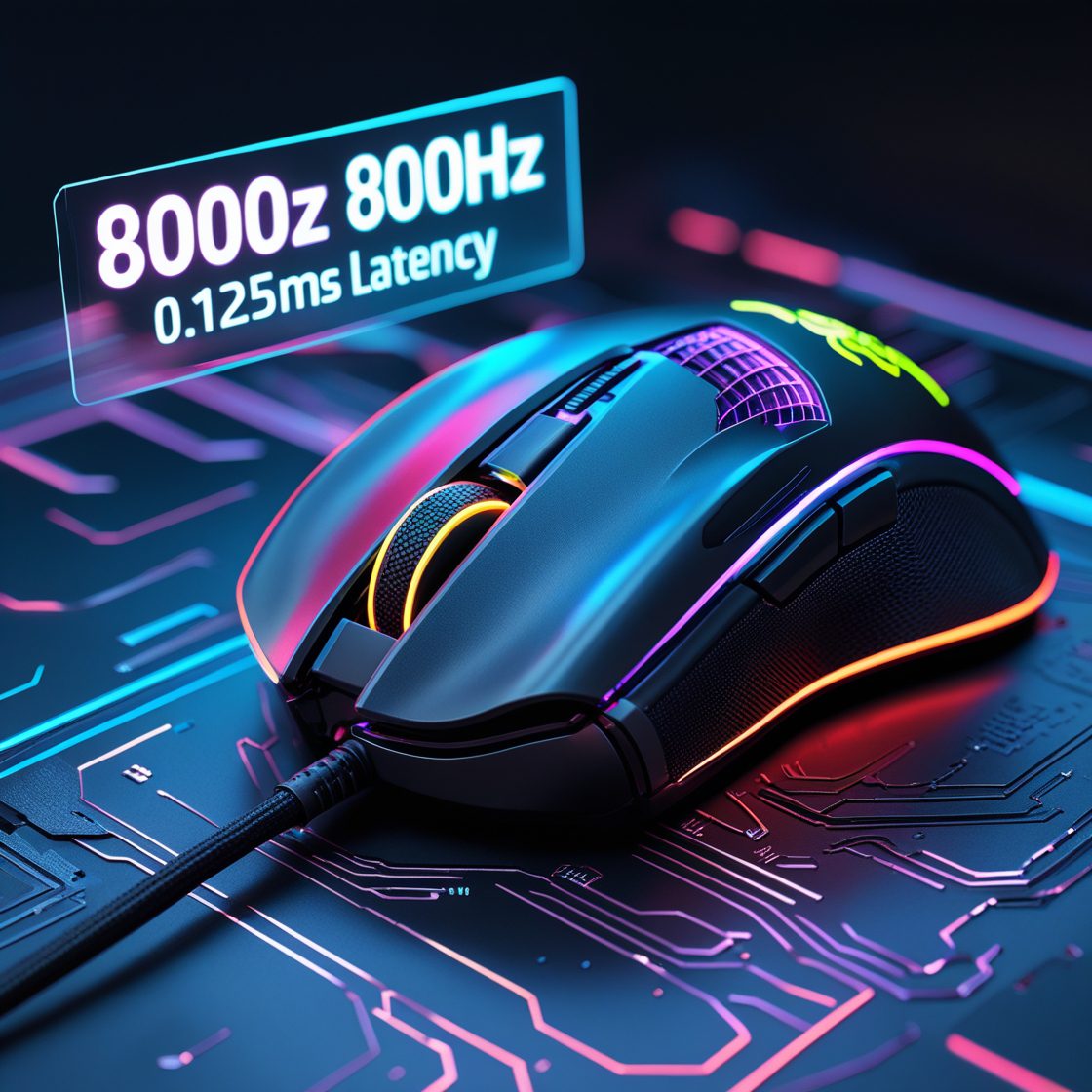
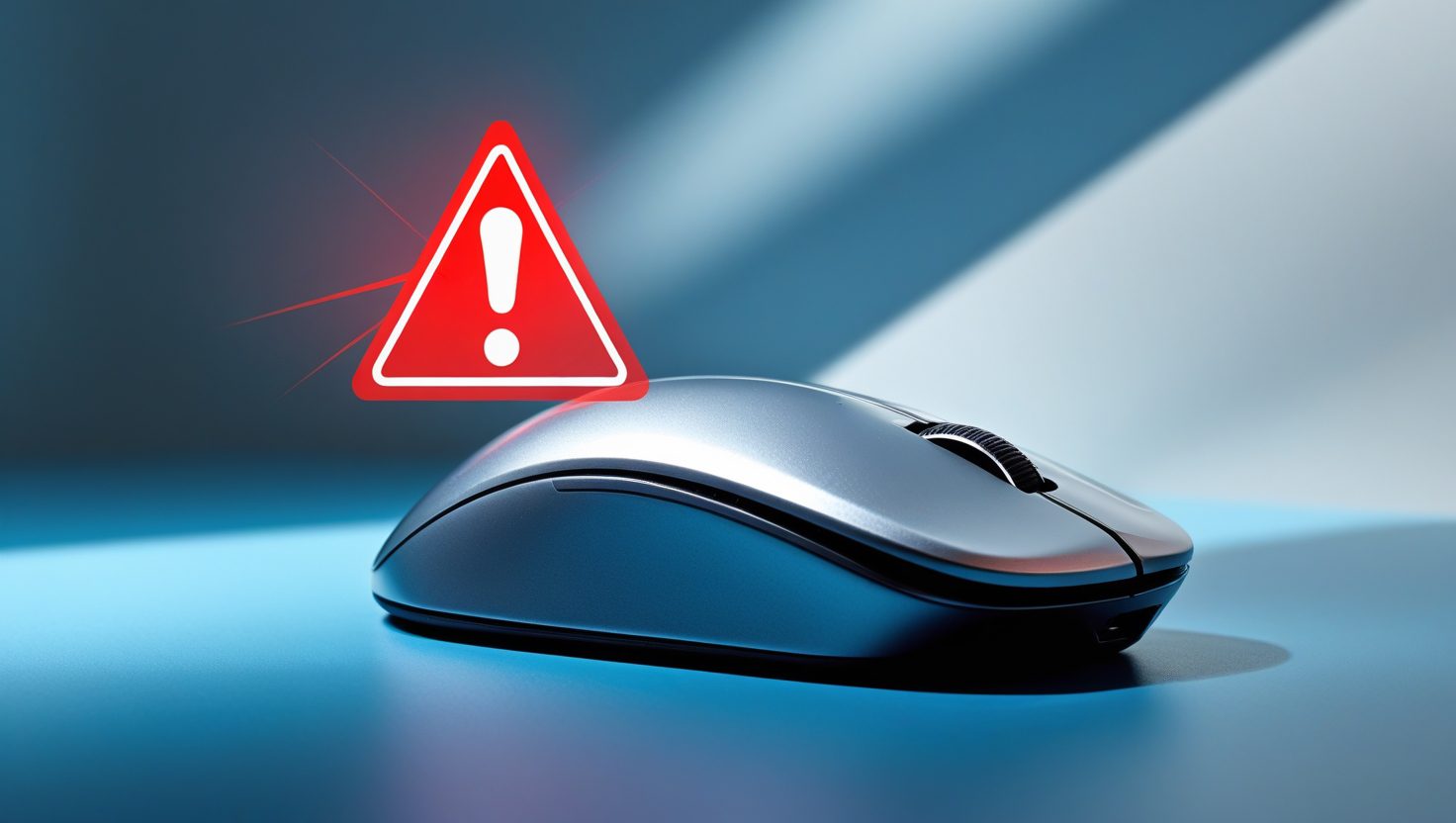

Lovart’s AI-driven approach is a game-changer for design efficiency. Imagine generating a poster with just a few sentences-then tweaking it like a pro. Exciting stuff! Check it out at Lovart.
Solid article! Thinking about bankroll management & variance is key in tournaments. Seeing platforms like jljl77 apps download offer easy deposits (GCash!) makes getting in the action simpler. Great for PH players! jljl77 apps download